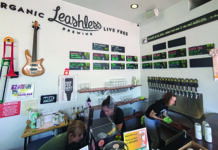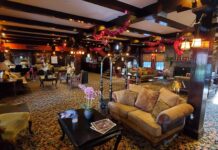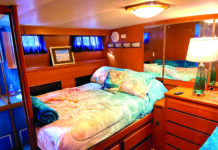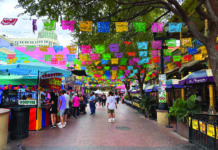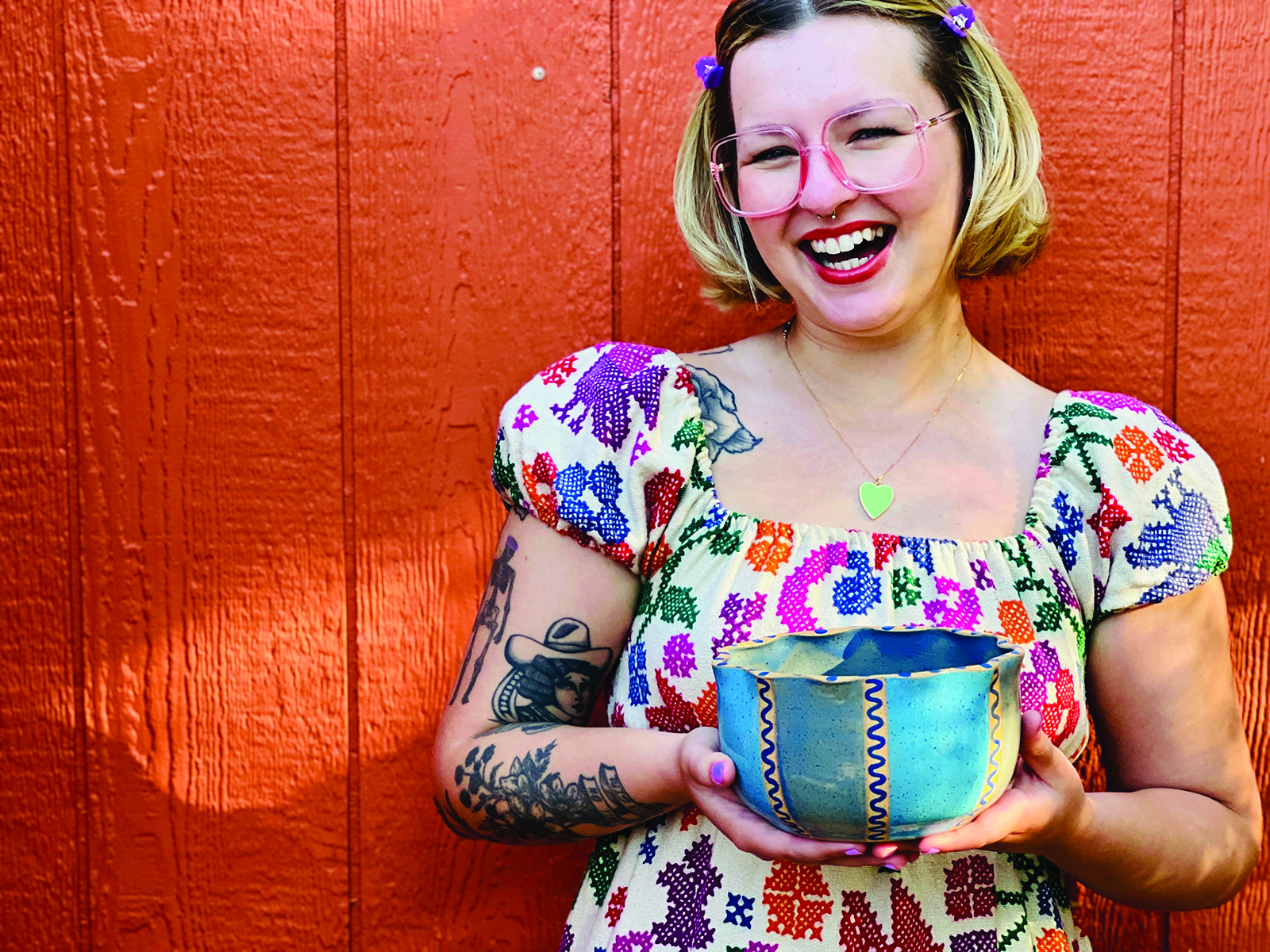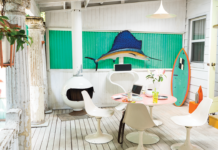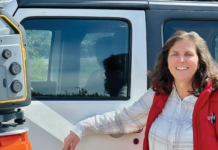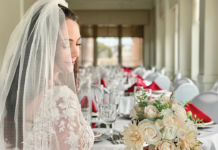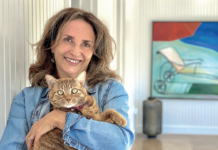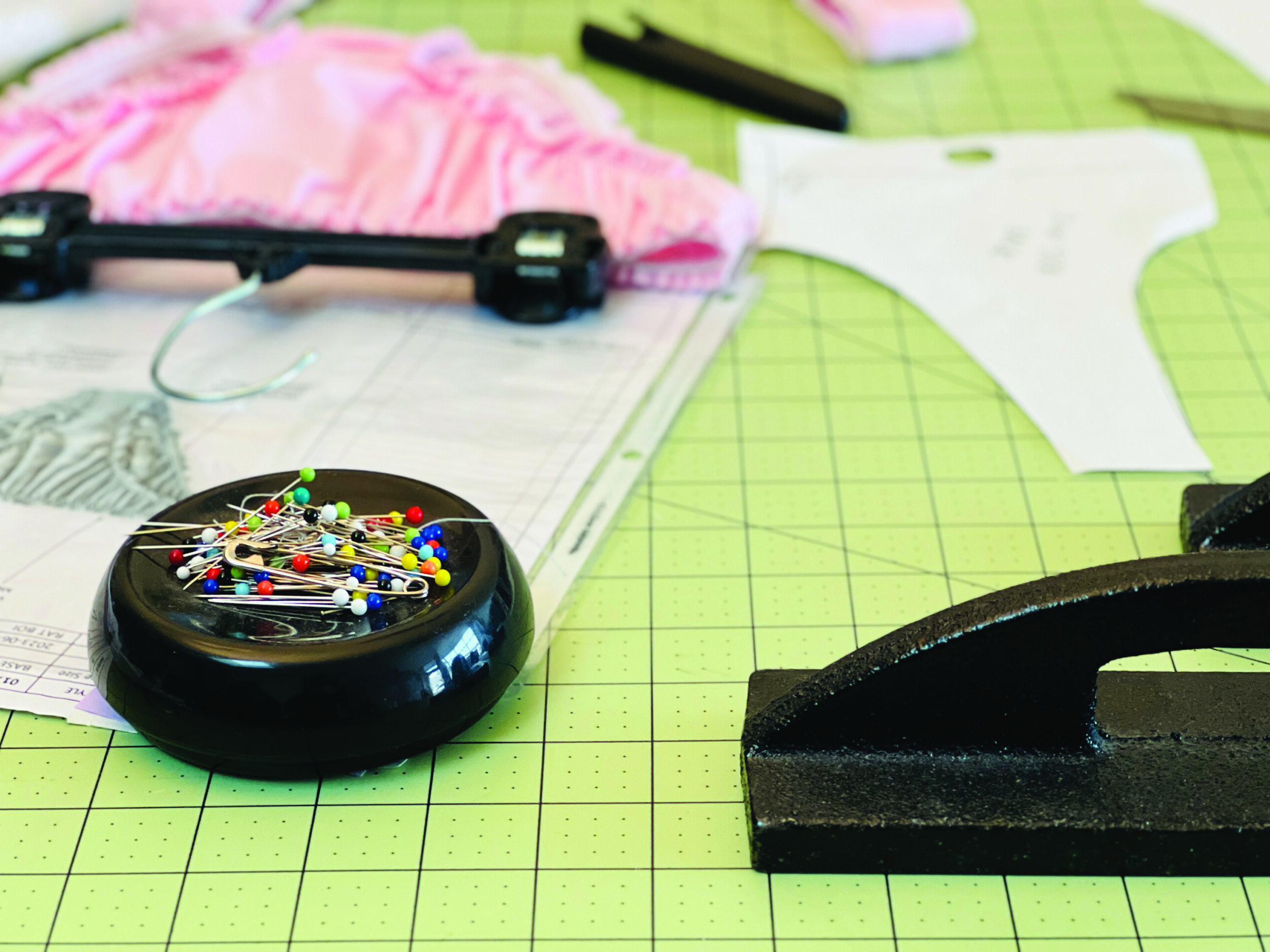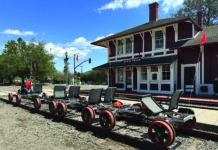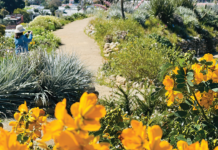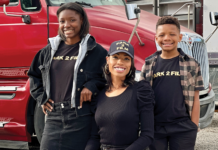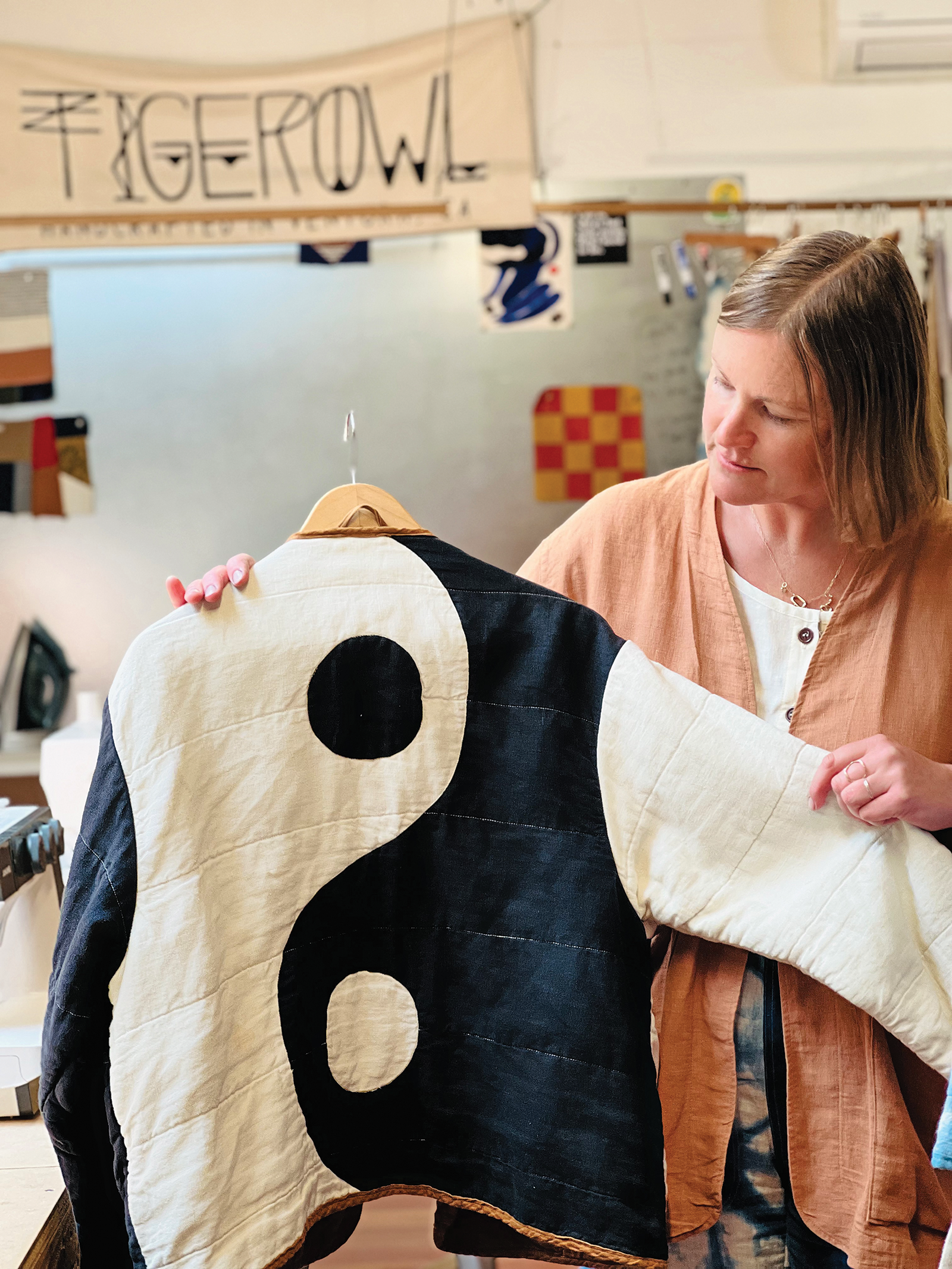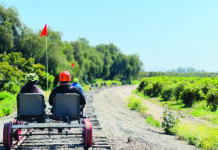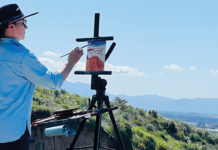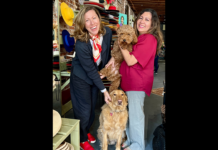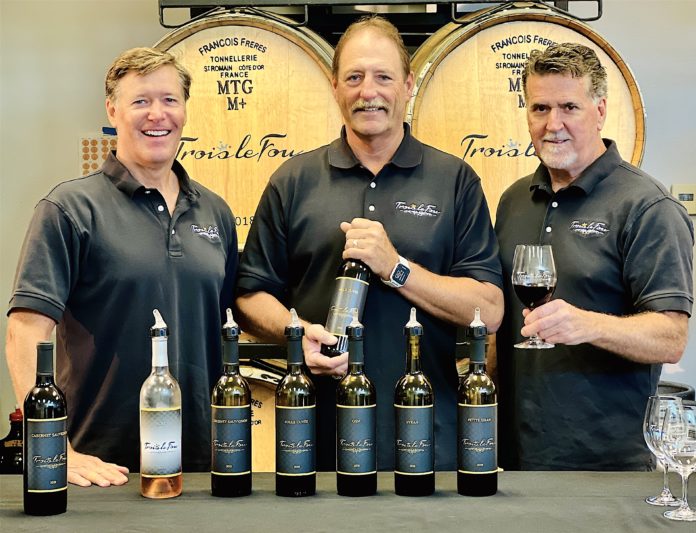By Nancy D. Lackey Shaffer
On April 1, 2022 — April Fool’s Day — a trio of winemakers welcomed the public in to their brand-new tasting room, where they uncorked their first vintage. Aptly named Trois le Fou, which roughly translates to “the three fools,” the winery was founded by Paul Douville (of Manhattan Beach), Tim Germaine and Alan Wharton (both of Camarillo), who, despite what the name might imply, went into the business with no delusions about the work and investment necessary to start a winemaking enterprise.
But these guys are crazy for wine, and their enthusiasm and skill (they’ve been home winemakers for years) are already starting to pay off. Trois le Fou made a big splash at the Ojai Wine Festival in June and the Los Angeles Garagiste Festival in July, and is already building a reputation for well-crafted Bordeaux and Rhone varietals. Indeed, the boutique winery showcases surprising finesse for a fresh-off-the-vine label. Ventana Monthly had a chance to talk to Douville, Germaine and Wharton about their love of wine, making the move from casual consumer to producer, local response and more.
VENTANA MONTHLY: Where are guys you from originally?
PAUL Douville: I was born in St Paul, Minnesota, but raised in Lincoln, Nebraska.
ALAN WHARTON: I grew up in New Braunfels, Texas, which is about halfway between San Antoino and Austin.
TIM GERMAINE: Born and raised in Connecticut.
What brought you to Southern California?
DOUVILLE: My father, who worked at IBM, was transferred to SoCal when I was in high school in 1978.
WHARTON: I was transferred to Ventura in 1984 by a company in the oil industry.
GERMAINE: Came to California in the early ’80s to attend college and never went back, mostly because of the weather and the beautiful settings.
How did the three of you get to know each other?
DOUVILLE: We all met about 30 years ago working in the semiconductor industry. Tim and I became personal friends early on, so we got to know each other well. Alan and I worked for the same company in the ’90s.
WHARTON: I met Tim while in distribution. He was/is a representative of a chip manufacturer that I supported as an application engineer. It’s a relatively small community where we’ve been crossing paths for 30+ years.
When did you first start developing a taste for wine?
DOUVILLE: When I was dating my wife, Julie. Her parents would host a Sunday night family dinner and served wine. Initially, I only drank beer, but over time I would taste and really enjoyed it. We then started to visit Napa, Sonoma and Santa Barbara County. I proposed to Julie in Napa and we got married in Yountville. About 15 years ago we discovered Paso Robles and my appreciation for Rhone style wines took off.
WHARTON: After moving to Ventura, my wife and I began traveling to Santa Ynez in the mid-’80s with some friends who introduced us to the wine tasting experience. Soon, we would be taking other friends there, [as well as] Edna Valley, Napa, Sonoma, Temecula, Paso Robles and other wine regions of California. It wasn’t long before my wife and I were members of 12 to 15 California wineries.
GERMAINE: I worked as a waiter during college and developed an interest in wine then. I thought the paring of wine with food was an exciting area of interest.
Two of you are avid home winemakers. How did your wines evolve?
DOUVILLE: One of my closest friends that I met in college was making wine with his father in Palo Alto. He thought it would be a good idea for us to make wine to help maintain our friendship. I knew Tim would be interested as well, so I asked him to join us, which was in 1995. We eventually moved the operation down to Southern California and started sourcing a half to a ton of grapes from Central California. At that point it was just Tim and I. We mostly made a barrel of merlot, cabernet or syrah.
GERMAINE: We made Rhone and Bordeaux wines but on a smaller scale. All our friends loved what we made so we always thought it would be great to do it on a larger scale someday.
What inspired you to make the move from garagiste to professional winery?
DOUVILLE: Once Alan joined us, he put the idea in play.
WHARTON: Paul knew I was an avid wine person. He and Tim asked me to join them in making a barrel of wine. While I was assisting them bottle their 2016 syrah, I noted the wine was made the way I preferred. It was fabulous! I made mention of that, and asked if they’d ever considered, or would consider, opening a winery. After a few gentile nudges, and quite a bit of wine . . . Here we are.
GERMAINE: When we realized Alan was also interested in making wine and brought valuable assets to the equation, it was apparent this was a perfect opportunity.
Have you been influenced by other winemakers? Who do you admire, and why?
WHARTON: Yes, in my travels to Paso Robles, my wife and I began making friends with several winemakers and wineries. I would say there are several, but Bob Tillman of Alta Colina, Bob Dunning of Dunning Vineyards, and Patti Bello of B&E Vineyards were the most influential. Their wine and backstories are very inspiring to me personally.
GERMAINE: I admire the ones that grow the grapes as well as make the wine, like Bob Tillman of Alta Colina. Those people control all the aspects of wine making from seedlings to finished, aged wine ready to serve. To me all wine makers are interesting. Making wine is a fairly basic process. You just need to follow a few basic principles but if you ask 10 different wine makers on how to make a good wine you will get 10 different answers.
When did you first start Trois le Fou?
DOUVILLE: The company was formed 2018, with our first public release of our 2019 vintages and the opening of our tasting room on April Fool’s Day, 2022.
Tell us a little about the role each of you plays.
DOUVILLE: We all are involved in the winemaking process and decisions, but Tim is our official winemaker, Alan manages the facility/operations and I head the sales and marketing.
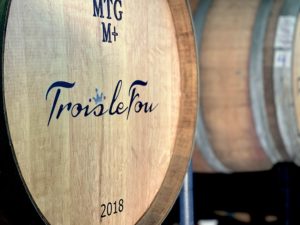
What were the biggest challenges in those early days?
DOUVILLE: Scaling from a barrel to roughly 18 barrels. This required all new equipment and a facility. Being self-funded, this was also a challenge.
WHARTON: Money being the largest. Then came the transport and handling of the grapes at harvest. Finally, we needed a building, which so happens my wife and I own the building we are located in. We renovated the 1,100 square feet we are in, as we were making the wine. We had to move barrels and equipment around during the construction.
How did you decide on Ventura as your base of operations?
WHARTON: The building played a large role, and Ventura’s climate is very conducive for making wine. Tim and I live in the area, which makes the wine making much easier.
You bottled and sold your first release this year. What was your first wine available for purchase?
DOUVILLE: 2018 merlot and zinfandel, but it was on a small scale and we only offered it to family and friends. Our first public release is our 2019, which consists of cabernet, merlot, syrah, grenache, mourvèdre and petite syrah.
How has the response been so far?
DOUVILLE: We have received very positive feedback from events we have poured at thus far.
WHARTON: Overwhelmingly wonderful. We are very fortunate to have a growing list of Club Lunatic members. We are still very much “unknown,” since we’ve only been open three months.
What’s a typical day or week like for each of you?
DOUVILLE: It will change depending on the time of the year. Right now, it is just manning the tasting room on the weekends and topping off our 2020 and 2021 barrels through the summer. But soon harvest will be here and it will be quite active with multiple trips to Paso Robles to pick up grapes, fermentation, press and rackings for the 2022 vintage. Not to mention bottling up our 2020 in December.
WHARTON: During harvest, I make several turn-around trips to Paso to pick up grapes and/or drop off bins for yet-to-be harvested grapes. Most of the time this occurs in the very early morning hours while the grapes are cool, and traffic light. We have to punch down the cap four times a day during fermentation. We each take turns; I usually get the 10 p.m. shift. After fermentation, we press the grapes. This activity starts in early September and rotates through each varietal, which ripens at different times. It ends when we’ve pressed off everything. During this time, I will be up early, and to bed late. For the rest of the activities — barreling, topping, bottling, and selling — we can manage most if not all tasks on the weekend.
Our tasting room is open on Saturdays and Sundays from 12 p.m. to 4 p.m. (last pouring, so maybe 5:30 p.m.?) and we rotate coverage for that as well.
GERMAINE: Mostly its slow and easy— except for harvest time when we get the call from the growers that the sugar levels have reached the ideal levels and the grapes need to be picked ASAP. That’s when the 12-hour days start. After harvest, the grapes need to be fermented very soon after. That takes approximately two weeks, then it’s on to the pressing, then racking, and by end of November we get a little break. But not that long, because by then the previous vintage needs to be bottled.
What’s been the biggest challenge so far with Trois le Fou?
DOUVILLE: As any new company, it’s getting the word out that we are in Ventura and open for tasting. We have been active at festivals, like Ojai Wine Festival, Garagiste Festival and Taste of Camarillo, to mention a few. We also plan to be in local establishments and will need to increase our print media efforts.
WHARTON: At present, being new, getting our name out and people in to try our wines. We have several campaigns like festivals, mailers, social media and magazines.
What do you find most rewarding about being in the wine business?
DOUVILLE: Creating a product from start to finish which others can enjoy and appreciate.
WHARTON: First and foremost, the smiles and reactions of those tasting/buying our wine. Next, the wine industry is a very tight group, even for the large wineries. We all help each other. If we can help other wineries, we do. Last but certainly not least, it gives you a sense of accomplishment. Knowing you created a wonderful product that many friends and family can enjoy.
GERMAINE: The ability to take grapes from the vine and turn them into a wonderful, complex and pleasing finished wine. That coupled with the very positive comments and accolades we have been getting from our customers. Wine making is an art and if you can please people with your art that is a wonderful and very satisfying feeling.
What are some future plans in store for Trois le Fou?
WHARTON: Our current business plan is to make roughly 500 cases per year, for the next few years. We still need equipment. We need to stay focused on making the best wine possible. We hope to start adding white wines to the portfolio, but that will depend on several factors. Our winery is very small, so expansion if and when business warrants will be interesting.
Do you imagine that your children will be involved in this at some point?
DOUVILLE: That would be great, but at this point, I see my kids as more influencers.
WHARTON: In a way, they already are. Our daughter Heather lives in Kentucky and shares her wine with friends. Our son Rylan lives in Melbourne, Australia, and does the same. They enjoy wine and someday may choose to join us.
GERMAINE: I’m sure they will be at least drinking it. My son already requested it for his wedding.
What are your hopes for Trois le Fou in 5-10 years? How about long term?
DOUVILLE: My hope is that we could create a destination for locals and tourists. Our location in Ventura on Market Street is well suited for wineries and breweries in close proximity. It would be great if we could help create a Santa Barbara “Funk Zone,” Lompoc “Wine Ghetto” or Paso Robles “Tin City” in the city of Ventura.
WHARTON: We plan to work hard at making the best wines for the Ventura area. We have excellent competitors/friends in the area, so we’ll need to stay on our toes! Long term, we hope to expand sales to other parts of the country.
GERMAINE: We hope to be double in size and doing this full time . . . with a wall full of awards!
Anything else about Trois le Fou you’d like to share?
DOUVILLE: I would like to let your readers know that Trois le Fou brings the quality of Paso Robles wines to Ventura without having to travel to Paso. We look forward to sharing our wines with you in our tasting room and seeing you at the next festival.
WHARTON: The name states we are the three fools, and for wine, to be sure. The best thing we can share is the wine itself.
GERMAINE: Our goal is to consistently produce the highest quality wines available. We can do that because we are small and we have the ability to monitor, measure, adjust, pamper and massage each individual barrel of wine as it goes through the developmental process. We will never release a substandard or just okay product.
Trois le Fou Winery
4522 Market Street, Suite B, Ventura
805.701.7973
Saturdays and Sundays, 12-4 p.m.
Tastings by appointment preferred, but walk-ins are welcome.



